SEO is a complete, multi-faceted discipline and there are many things that you have to learn to create high-quality SEO campaigns that yield results. An underlying aspect of SEO that always remains important, however, and is worth learning at an SEO training London course is keyword research.
Keywords form the basis of your SEO strategies and are what you optimize your content around. If your business doesn’t use the right keywords, your SEO may not bring in the right customers, and get decent conversions.
The core of keyword research can be broken down into three steps – locating, analyzing, and targeting, and we explain them below.
Step 1 - Locating Keywords
Before you can do anything you need to have a list of keywords to work with! This is the first thing you must do and you can do the following steps:
- Find seed keywords using basic business insight
- Generate additional keywords from these seeds
- Use keyword research tools for more detailed insight
A simple starting point is to brainstorm ideas and find keywords based on your business and what it does. What industry is your business part of? What products or services do you sell? Is your company global or does it serve a particular region? Questions like these can help generate keyword lists.
You can use this technique to build a list of seed keywords. These are starting points that you can then spawn other keywords. For example, you have a car dealership in Essex. A seed keyword could be “car dealership”. You could then spawn additional keywords from this by adding words like “car dealership in Essex”, and “car dealership in London”.
Lastly, with a basic keyword list in place, you can use keyword research tools like Google Keyword Planner to find more short-term and long tail keywords.
Step 2 - Analyzing Keywords
Now that you have a list of keywords, you have to narrow your choices and select the best options that you want to target and use as your focus keywords. Two important metrics to consider to select keywords include:
- Search volume
- Keyword difficulty
The search volume relates to how popular the word is and how many people search for it. If it has a higher search volume then it has the potential to generate more conversions.
Keyword difficulty relates to how hard it is to rank for that word or phrase. Different platforms give keyword difficulty various rank schemes like Easy to Very Hard. Basically, it denotes the competition and how likely you are to rank for it.
You have to decide which keywords you want to try and rank for based on the data. Bear in mind that keywords with a high search volume can drive more traffic, but they are usually much harder to rank for.
In contrast, low search volume keywords may not yield as many results, but there is often less competition and you can put less effort into the optimization and still rank for the terms.
Step 3 - Targeting Keywords
With your short-term and long-tail keywords selected, you now need to determine how you will target them in your web content. Two important factors to determine this include:
- Primary and secondary keywords
- Customer search intent
A primary keyword is typically the one that you want to rank the most for. It will be used frequently in your web content such as headings, and meta tags. Secondary keywords are also important but they are not your first target. These are used more sporadically in your content.
Before you do any optimization you must determine the primary and secondary keywords. After that, understanding the search intent of your customers is vital too. It’s no good to simply try and rank for keywords without knowing the context they are used, and why customers will search for them.
You can use common sense for this and put yourself in the shoes of your customers. There are also tools available that can help you understand the intent and use this to better target your keywords.
With targeting sorted, you are now ready to optimize your web content and start using your keywords!
Follow These 3 Simple Steps to Get the Right Keywords for Your Business
Keyword research doesn’t have to be difficult but it is crucial to get it right and give enough attention to the process. By using the above three steps, you can make sure that you start your SEO campaigns correctly and have the right keywords to optimize your web content.










